Smart Government Market Size
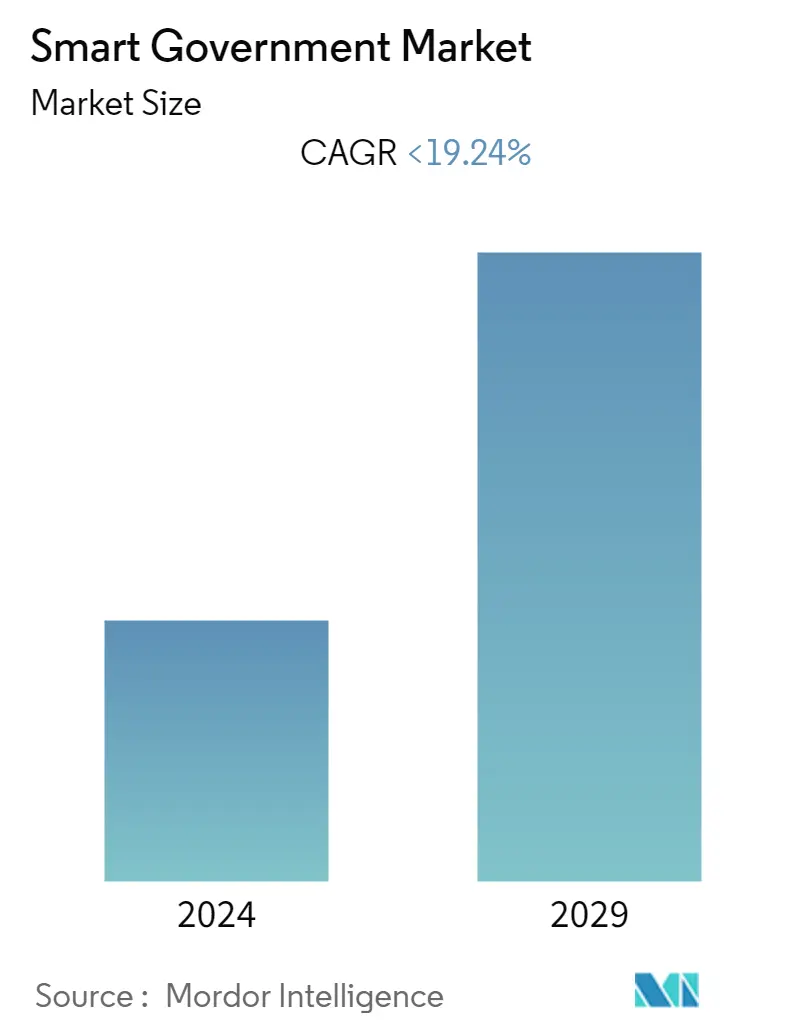
| Study Period | 2019 - 2029 |
| Base Year For Estimation | 2023 |
| CAGR | 19.24 % |
| Fastest Growing Market | Asia Pacific |
| Largest Market | North America |
| Market Concentration | Low |
Major Players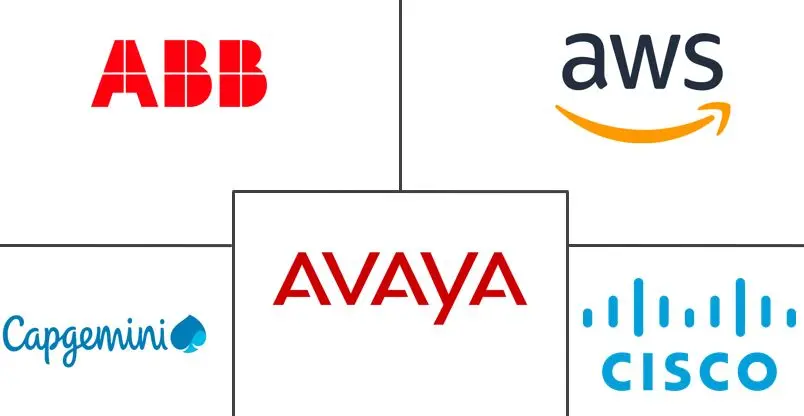
*Disclaimer: Major Players sorted in no particular order |
Smart Government Market Analysis
The smart government market is expected to register a CAGR of 19.24% during the forecast period. The main factor driving the market is the ability of the citizen to interact with the government service in a new way due to the rising smart technologies by governments across various countries.
- The generation of government data is expanding due to several factors, including the growing census data (ever-increasing population), new policies and initiatives, partnerships with other regions, and an increase in GDP due to the mushrooming of new businesses. Physical hardware-based legacy systems may be more efficient but also run out of space. As a result, there is an increasing demand for smart governance.
- For instance, the city of Louisville in the United States offers junk pickup reminders to residents via GovDelivery, segmented by location, to better coordinate sanitation services. More than 12,000 households signed up to receive text message alerts one week and one day before garbage collection.
- Vendors are offering public, private, or hybrid cloud solutions for government data related to its administration, security, backup, or compliance, making the cloud for the government the newest big thing.
- On a global scale, the systematic openness of government data has increased rapidly. The cloud facilitates government data transparency, which promotes government accountability and reduces corruption. Furthermore, it contributes to citizen empowerment and resolving complex societal issues by utilizing a broader range of skills and information.
- However, smart governance has many advantages, the government faces numerous challenges. For example, the government requires significant resources and commitment to build digital infrastructure and connect everything online. Developing countries face financial difficulties due to various development initiatives, poor tax collection, significant foreign debt, trade deficits, and other social issues.
- In terms of supply, the COVID-19 pandemic has wreaked havoc on the economies of small, medium, and large-scale enterprises that manufacture the hardware tools required for global service deployment. Lockdowns imposed on individual nations by governments worldwide (to stop the virus from spreading) have made matters worse by damaging global supply chains and disrupting manufacturing activities.
Smart Government Market Trends
E-governance Services to Drive Market Growth
- Smart governance is primarily driven by e-government and public participation in decision-making. For instance, Information and Communication Technology refers to collecting, processing, sharing, and retrieving data using computers, the internet, telecommunications, and digital equipment. Improved information transmission via telecommunications channels such as cable, radio, telephone, and satellite systems.
- With so many advantages, e-Government has become a necessity and an essential component of every country. Governments across the country are working hard to incorporate technology and information into their operations.
- Citizen participation is a critical component of smart governance. Citizens and the government must be able to communicate effectively. They must be free to express their opinions on government policies, plans, and initiatives. Their comments require direct communication with leaders, counselors, city managers, or the local head.
- E-governance aims to rethink citizen participation in the democratic process while also changing how governments operate, as the need for citizen participation in the democratic process grows by the day. Through the use of e-government, government-to-citizen (G2C), government-to-business (G2B), and government-to-government (G2G), solutions and services are integrated, giving citizens and the government unprecedented authority.
- The COVID-19 pandemic has made it even more critical for the government to go digital. As the demand for quick access to credible information and efficient communication between individuals and government agencies has grown, most countries have expanded their public internet services and adopted digital strategies. For instance, South Korea's advanced ICT sector has successfully digitalized its government services in recent years.
- Furthermore, Technology can be used to save and care for millions of people worldwide under the banner of eHealth. The Egyptian government's e-health application, which provides free breast cancer tests to Egyptian women over the age of 45, is an example of the need for e-governance. The system's reliance on satellite connectivity allows for the transmission of tests from remote units. This online program provides non-discriminatory support for early-stage breast cancer treatment.
- Furthermore, e-Governance programs in India have always had to automate government offices and make online services available to the general public. The new India has made significant advances in e-Governance, using ICT for everything from elections and censuses to computerizing all government facilities and digital lockers for e-Transportation, e-Health, e-Education, and e-Taxation.
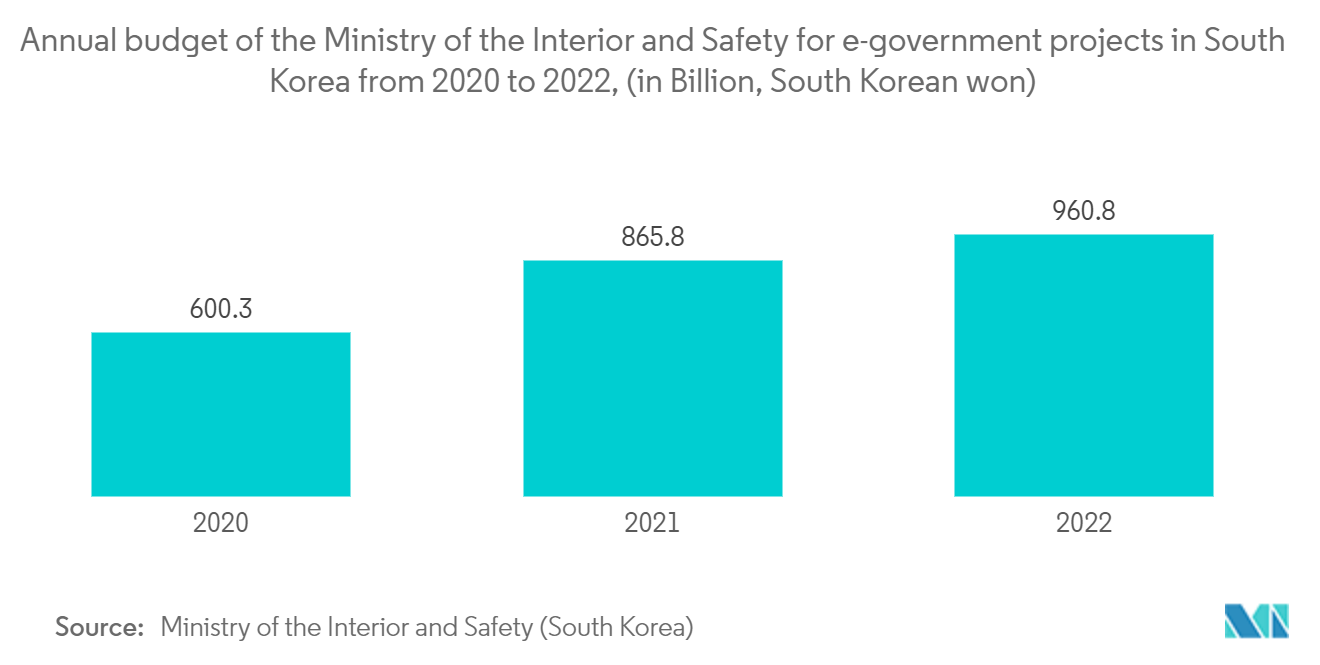
North America to Hold a Significant Market Share
- The increasing adoption of smart infrastructure, followed by smart city initiatives across the region, has boosted the North American market for smart government. Demand has been driven by industries such as grid automation monitoring.
- The Internet of Things (IoT) and cloud computing have accelerated market growth in this region and are gaining traction in the smart government industry. Furthermore, the emergence of critical businesses that provide smart government services and solutions is driving market growth in this area.
- The emergence of critical businesses that provide smart government services and solutions is driving market growth in this area. Furthermore, the United States is heavily investing in the microgrid movement, particularly in California, which has mandated that all of its electricity come from zero-emission sources by 2045. Smart mobility deployments are also increasing in the United States. For example, the Florida Senate recently passed a unanimous bill allowing companies such as Uber, Lyft, and General Motors to begin deploying self-driving vehicles.
- Following the devastation caused by Superstorm Sandy, New York established a USD 11 million prize fund to spur renewable microgrid development. Such initiatives are assisting the smart government market.
- The North American digital-government ecosystem is evolving and maturing as new technologies become available and public expectations of government services shift. In the United States and Canada, strong policies are in place at various levels to direct efforts to digitize the entire federal government. The previous year, Canada published its first digital-government strategy to streamline digital operations, modernize IT infrastructure, accelerate technology adoption, and improve service delivery.
- The assistance of Canadian Digital Service Enhances public services by increasing government-wide capability for human-centered service design, iterative development, and Statistics Canada by providing public access to government data, statistics, and information on Canada's economy, society, and environment, as information on Canada's economy, culture, and environment, as well as by increasing government transparency and trust.
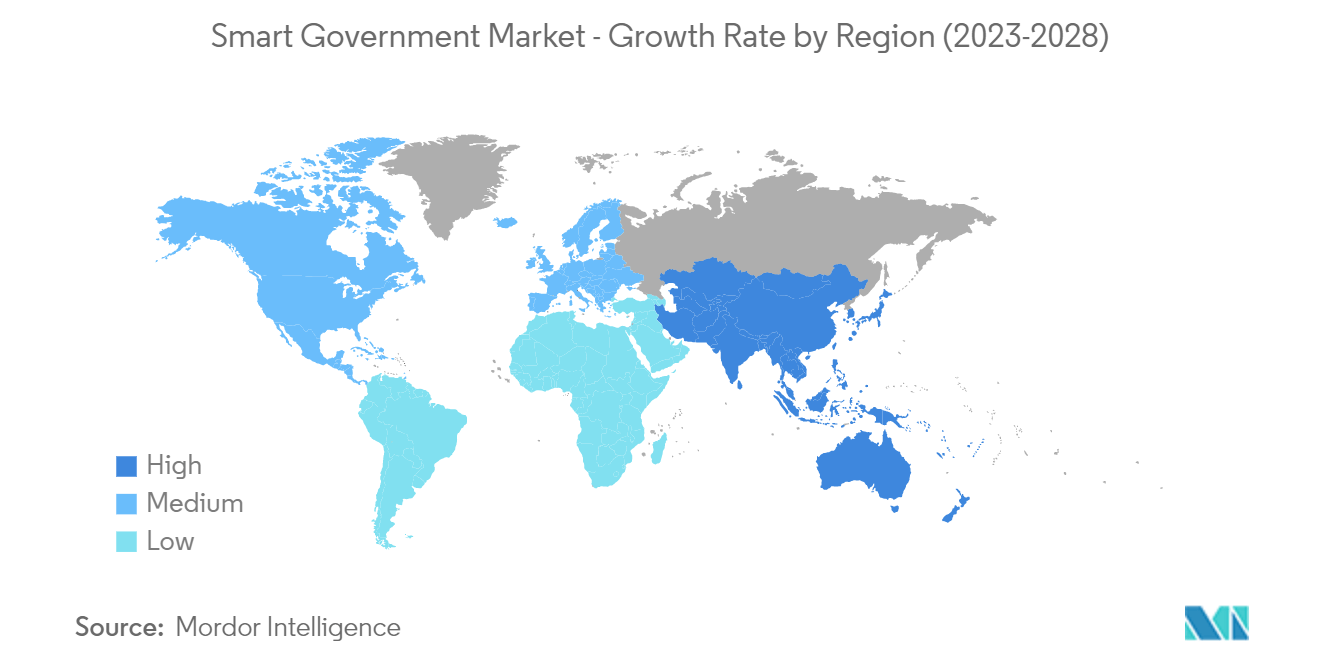
Smart Government Industry Overview
The smart government market is fragmented in nature. The companies operating in the market are executing mergers and acquisitions, strategic partnerships, and product development to gain market share. The major players include ABB Ltd, Amazon Web Services Inc., and Cisco Systems Inc. A few recent developments are:
- June 2022 - Google Cloud expands its commitment in the United States with the establishment of Google Public Sector, a new Google division dedicated to assisting United States public sector institutions, including federal, state, and local governments, as well as educational institutions, in accelerating their digital transformations.
- Furthermore, this new division, which operates as a subsidiary of Google LLC, specializes in bringing Google Cloud technologies, such as Google Cloud Platform and Google Workspace, to public sector customers in the United States. Google Public Sector provides institutions with unique products and expertise, such as Google Cloud's data and analytics platform, artificial intelligence (AI), and machine learning (ML) tools, to better understand their data and automate core processes.
- March 2022 - Microsoft has announced the upcoming launch of a new United States Government cloud environment: Office 365 Government Secret, which is currently being reviewed by the government and will be available in early 2023. With its best-in-class software as a service (SaaS) capability, this environment is designed to support the United States Federal Civilian, the Department of Defense (DoD), the Intelligence Community (IC), and United States government collaborators working within the Secret enclave. Moreover, with this new environment that supports Impact Level 6 (IL6), Microsoft is expanding the comprehensive Office 365 Government cloud offerings to help meet the full range of government data needs.
Smart Government Market Leaders
-
Amazon Web Services, Inc.
-
Avaya Inc.
-
Cisco Systems, Inc.
-
ABB
-
Capgemini
*Disclaimer: Major Players sorted in no particular order
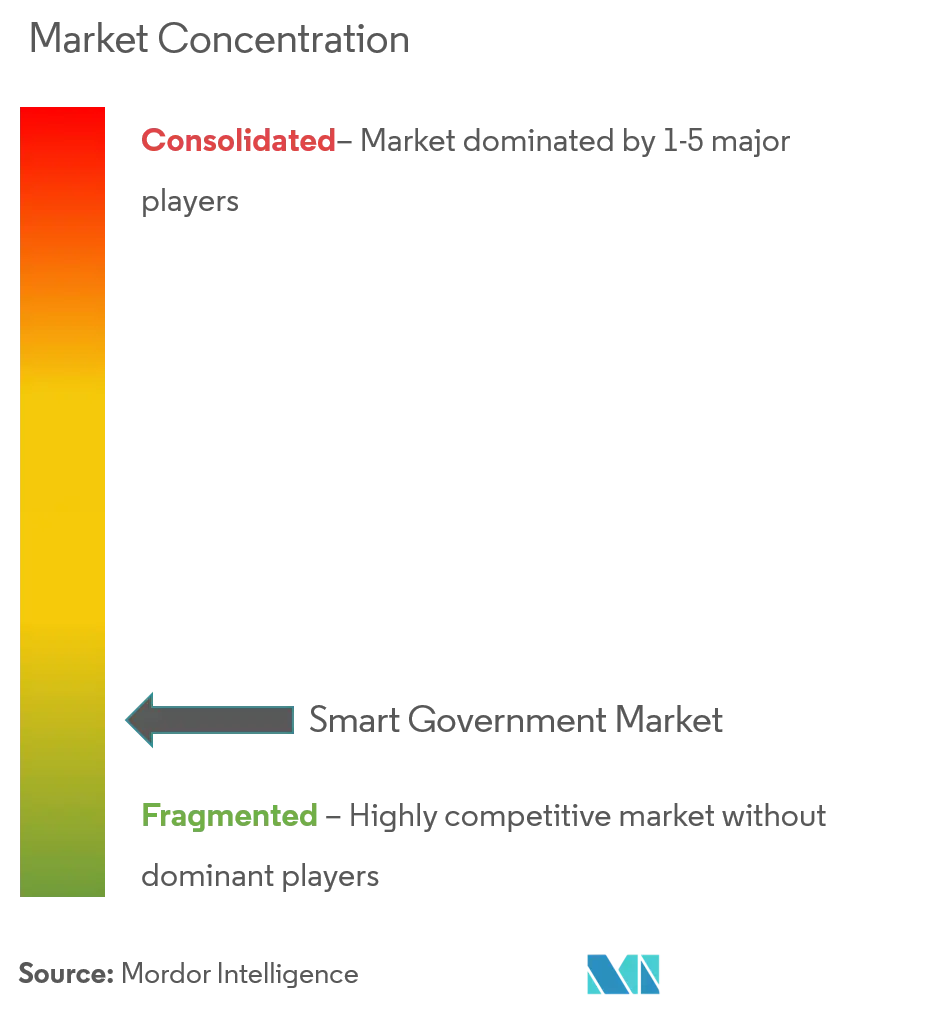
Smart Government Market News
- May 2022 - The Malaysian government has launched MyGovCloud, its cloud computing service, a cloud computing service that serves as an upgrade to the Public Sector Data Centre. All government agencies can use the new service. Moreover, a contract agreement was signed by the government, Cloud Service Provider (CSP), and Managed Service Provider (MSP), a local Cloud Bumiputera service provider appointed by CSP. The Malaysian Administrative Modernisation and Management Planning Unit (MAMPU), the federal agency in charge of the public sector's digitalization agenda, represented Malaysia in the agreement.
- March 2022 - E-government will be critical to India's infrastructure development. In the most current Union Budget unveiled on February 1, the government significantly increased the sector's funding. In the fiscal year 2022-2023, it is projected to spend more than Rs 10 lakh crore.
- March 2022 - According to research results published by Amazon Web Services (AWS), the epidemic has increased the need for digital skills training. According to the survey, the number of Indian workers who require digital skills for their jobs will rise by 27.3 million over the next year, accounting for 7% of the country's labor force.
Smart Government Market Report - Table of Contents
1. INTRODUCTION
- 1.1 Study Assumptions and Market Definition
- 1.2 Scope of the Study
2. RESEARCH METHODOLOGY
3. EXECUTIVE SUMMARY
4. MARKET INSIGHTS
- 4.1 Market Overview
- 4.2 Industry Value Chain Analysis
-
4.3 Industry Attractiveness - Porter's Five Forces Analysis
- 4.3.1 Bargaining Power of Suppliers
- 4.3.2 Bargaining Power of Consumers
- 4.3.3 Threat of New Entrants
- 4.3.4 Intensity of Competitive Rivalry
- 4.3.5 Threat of Substitute Products
- 4.4 Impact of COVID-19 on the Market
5. MARKET DYNAMICS
-
5.1 Market Drivers
- 5.1.1 Government Initiatives for Digital Transformation
- 5.1.2 Adoption of SMAC (Social, Mobile, Analytics, and Cloud)
-
5.2 Market Challenges
- 5.2.1 Lack of Uniform Laws and Regulations on Data Sharing
- 5.2.2 Data Privacy and Data Theft-related Issues
6. MARKET SEGMENTATION
-
6.1 By Type
- 6.1.1 Solution
- 6.1.1.1 Government Resource Planning System
- 6.1.1.2 Remote Monitoring
- 6.1.1.3 Security
- 6.1.1.4 Other Solutions (Open Data Platform and Network Management)
- 6.1.2 Service
- 6.1.2.1 Financial
- 6.1.2.2 Healthcare
- 6.1.2.3 Power and Utilities
- 6.1.2.4 Telecom
- 6.1.2.5 Oil and Gas
- 6.1.2.6 Other Services (Education and Transportation)
-
6.2 By Deployment
- 6.2.1 On Premise
- 6.2.2 Cloud
-
6.3 By Geography
- 6.3.1 North America
- 6.3.2 Europe
- 6.3.3 Asia Pacific
- 6.3.4 Latin America
- 6.3.5 Rest of World
7. COMPETITIVE LANDSCAPE
-
7.1 Company Profiles
- 7.1.1 ABB
- 7.1.2 Amazon Web Services, Inc.
- 7.1.3 Avaya Inc.
- 7.1.4 Capgemini
- 7.1.5 Cisco Systems, Inc.
- 7.1.6 Entrust Corporation
- 7.1.7 Huawei Technologies Co., Ltd.
- 7.1.8 HID Global Corporation (ASSA ABLOY)
- 7.1.9 International Business Machines (IBM) Corporation
- 7.1.10 Imex Systems Inc.
- 7.1.11 Nokia Corporation
- 7.1.12 OpenGov
- 7.1.13 Oracle
- 7.1.14 UTI Group
- *List Not Exhaustive
8. INVESTMENT ANALYSIS
9. MARKET OPPORTUNITIES AND FUTURE TRENDS
** Subject To AvailablitySmart Government Industry Segmentation
Smart Government is an extension of e-government, which applies information, communication, and operational technologies to all operational areas across multiple domains, process areas, and jurisdictions to generate sustainable public value.
The scope of the study is currently focused on key regions such as North America, Europe, Asia-Pacific, Latin America, and Middle East & Africa. The study also tracks the key market parameters, underlying growth influencers, and major vendors operating in the industry, which supports the market estimations and growth rates over the forecast period.
The market sizes and forecasts are provided in terms of value (USD million) for all the above segments.
| By Type | Solution | Government Resource Planning System |
| Remote Monitoring | ||
| Security | ||
| Other Solutions (Open Data Platform and Network Management) | ||
| By Type | Service | Financial |
| Healthcare | ||
| Power and Utilities | ||
| Telecom | ||
| Oil and Gas | ||
| Other Services (Education and Transportation) | ||
| By Deployment | On Premise | |
| Cloud | ||
| By Geography | North America | |
| Europe | ||
| Asia Pacific | ||
| Latin America | ||
| Rest of World |
Smart Government Market Research FAQs
What is the current Smart Government Market size?
The Smart Government Market is projected to register a CAGR of less than 19.24% during the forecast period (2024-2029)
Who are the key players in Smart Government Market?
Amazon Web Services, Inc., Avaya Inc., Cisco Systems, Inc., ABB and Capgemini are the major companies operating in the Smart Government Market.
Which is the fastest growing region in Smart Government Market?
Asia Pacific is estimated to grow at the highest CAGR over the forecast period (2024-2029).
Which region has the biggest share in Smart Government Market?
In 2024, the North America accounts for the largest market share in Smart Government Market.
What years does this Smart Government Market cover?
The report covers the Smart Government Market historical market size for years: 2019, 2020, 2021, 2022 and 2023. The report also forecasts the Smart Government Market size for years: 2024, 2025, 2026, 2027, 2028 and 2029.
Smart Government Services Industry Report
Statistics for the 2023 Smart Government Services market share, size and revenue growth rate, created by Mordor Intelligence™ Industry Reports. Smart Government Services analysis includes a market forecast outlook to 2029 and historical overview. Get a sample of this industry analysis as a free report PDF download.



